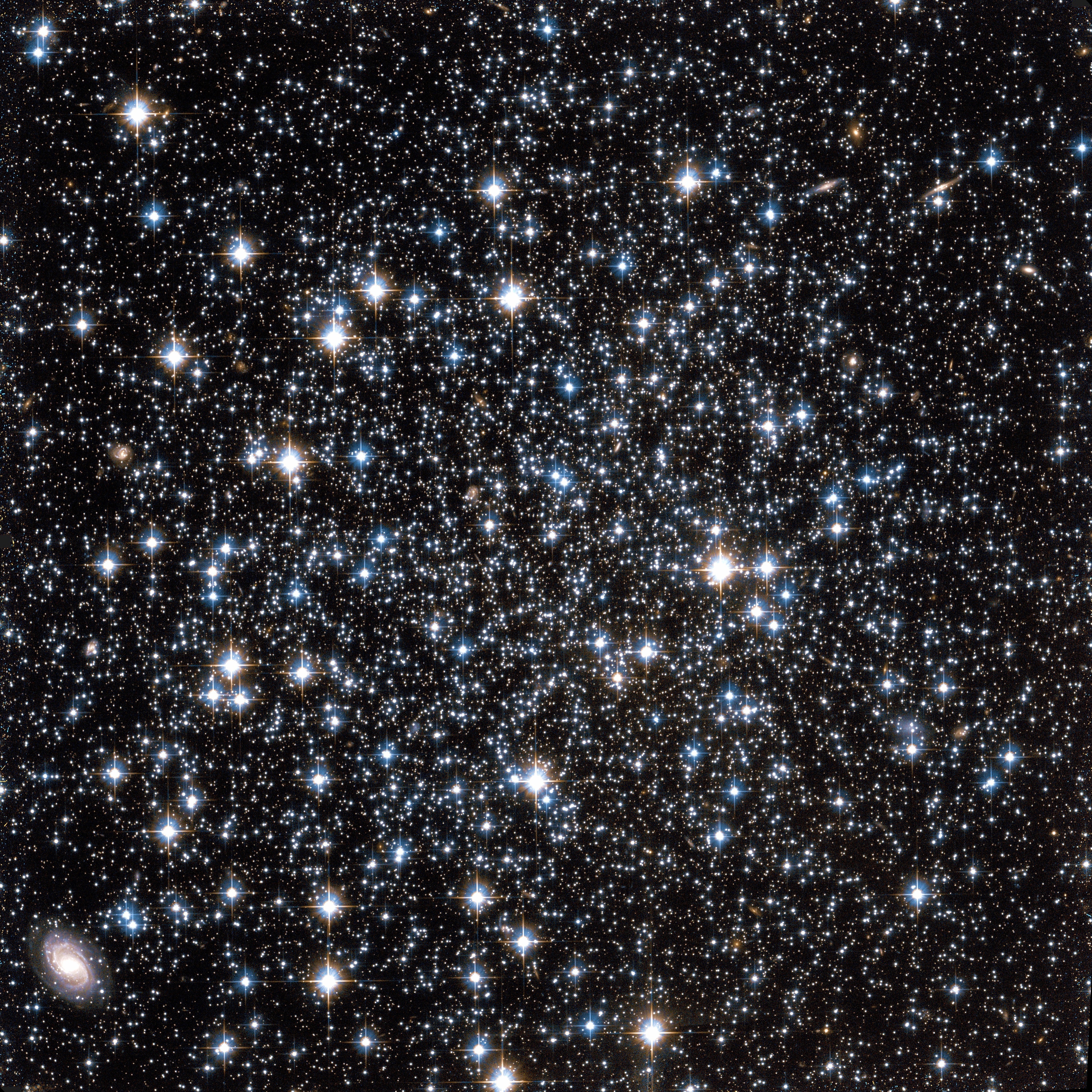|
Stellar Streams
This is a list of stellar streams. A stellar stream is an association of stars orbiting a galaxy. It was once a globular cluster or dwarf galaxy that has now been torn apart and stretched out along its orbit by tidal forces. An exception in the list about Milky Way streams given below is the Magellanic Stream, composed of gas (mostly hydrogen), although in 2023 a population of stars has been described inside it. Local Group streams Milky Way streams Andromeda Galaxy streams Streams beyond the Local Group Due to new deeper sky surveys, such as the Dark Energy Spectroscopic Instrument#DESI Legacy Imaging Surveys, DESI Legacy Imaging Survey, a large number of streams are to be expected to be discovered in the future. An initial search in 2023 by Martínez-Delgado et al. searched 389 galaxies and found 89 candidates with stellar streams (22,9%). They plan to search about 3100 galaxies, which might yield hundreds of candidates. In the pasts less sensitive surveys such as Sloan D ... [...More Info...] [...Related Items...] OR: [Wikipedia] [Google] [Baidu] |
Helmi Stream
The Helmi Stream is a stellar stream of the Milky Way galaxy. It started as a dwarf galaxy, now absorbed by the Milky Way as a stream. It was discovered in 1999, is formed of old stars deficient in heavy elements, and has a mass of 10 to 100 million solar masses. It was absorbed by the Milky Way some 6 to 9 billion years ago.Scientific American"Extragalactic Expat: Newfound Exoplanet Likely Came from Another Galaxy" John Matson , 18 November 2010 The stream was named after Amina Helmi, who discovered this stellar stream after noticing this group of stars all moving at the same speed and in the same direction. The Helmi Stream discovery affirmed theories that the merging of galaxies played a significant role in creating the giant structures of the Milky Way galaxy. In 2024 a subdwarf of spectral type sdT4 was identified as a possible member of the Helmi stream. The brown dwarf is called CWISE J155349.96+693355.2 has Vtan > 300 km/s and a poorly constrained radial velocity of ... [...More Info...] [...Related Items...] OR: [Wikipedia] [Google] [Baidu] |
Boötes III Stream
Boötes ( ) is a constellation in the northern sky, located between 0° and +60° declination, and 13 and 16 hours of right ascension on the celestial sphere. The name comes from , which comes from 'herder, herdsman' or 'plowman' (literally, 'ox-driver'; from ''boûs'' 'cow'). One of the 48 constellations described by the 2nd-century astronomer Ptolemy, Boötes is now one of the 88 modern constellations. It contains the List of brightest stars, fourth-brightest star in the night sky, the orange giant Arcturus. Epsilon Boötis, or Izar, is a colourful multiple star popular with amateur astronomers. Boötes is home to many other bright stars, including eight above the fourth magnitude and an additional 21 above the fifth magnitude, making a total of 29 stars easily visible to the naked eye. History and mythology In ancient Babylon, the stars of Boötes were known as SHU.PA. They were apparently depicted as the god Enlil, who was the leader of the Babylonian religion, Babyloni ... [...More Info...] [...Related Items...] OR: [Wikipedia] [Google] [Baidu] |
Acheron Stream
The Acheron ( or ; ''Acheron'' or Ἀχερούσιος ''Acherousios''; ''Acherontas'') is a river in the Epirus region of northwest Greece. It is long, and has a drainage area of . The river's source is located near the village Zotiko, in the southwestern part of the Ioannina regional unit. The Acheron flows into the Ionian Sea in Ammoudia, near Parga. The Acheron also features prominently in Greek mythology, where it is often depicted as the entrance to the Greek Underworld where souls must be ferried across by Charon (although some later sources, such as Roman poets, assign this role to the river Styx). Mythology Ancient Greek mythology saw the Acheron, sometimes known as the "river of woe", as one of the five rivers of the Greek underworld. The name is of uncertain etymology. Most classical accounts, including Pausanias (10.28) and later Dante's ''Inferno'' (3.78), portray the Acheron as the entrance to the Underworld and depict Charon ferrying the souls of the ... [...More Info...] [...Related Items...] OR: [Wikipedia] [Google] [Baidu] |
Orphan Stream
An orphan is a child whose parents have died, are unknown, or have permanently abandoned them. It can also refer to a child who has lost only one parent, as the Hebrew translation, for example, is "fatherless". In some languages, such as Swedish, the term is "parentless" and more ambiguous about whether the parents are dead, unknown or absconded, but typically refers to a child or younger adult. In common usage, only a child who has lost both parents due to death is called an orphan. When referring to animals, only the mother's condition is usually relevant (i.e., if the female parent has gone, the offspring is an orphan, regardless of the father's condition). Definitions Various groups use different definitions to identify orphans. One legal definition used in the United States is a minor bereft through "death or disappearance of, abandonment or desertion by, or separation or loss from, both parents". In everyday use, an orphan does not have any surviving parent to care fo ... [...More Info...] [...Related Items...] OR: [Wikipedia] [Google] [Baidu] |
NGC 5466
NGC 5466 is a globular cluster of stars in the constellation Boötes. It was discovered by German-British astronomer William Herschel on May 17, 1784, and catalogued as H VI.9. This large, dim cluster has an apparent visual magnitude of 9.2 and spans an angular size of . It is relatively distant from the Sun, about away, and from the Galactic Center. Observations The Shapley–Sawyer Concentration Class of NGC 5466 is XII. This is a loose cluster with an unusually low central density compared to other globulars with similar luminosity. It is located at a high galactic latitude and thus displays negligible reddening from interstellar dust. The cluster has a core radius of and a half-light radius of . The King tidal radius is . Observation of the distribution of stars in the cluster shows the impact of mass segregation, with heavier objects sinking toward the center. This is a dynamically young cluster that is just starting to evolve. An isochrone fit to the cluster yields a ... [...More Info...] [...Related Items...] OR: [Wikipedia] [Google] [Baidu] |
GD-1
In 2006, GD-1 is identified as a moving group of old, metal-poor stars located at 8.5 kpc above the galactic disk and spanning 63 degrees across the sky. The stream was formed after a globular cluster was disrupted by tidal forces, possibly from the gravitational field of the Milky Way. The stream is located within the Field of Streams, a region of sky in the galactic northern hemisphere containing many stellar streams, the most prominent of which is the Sagittarius stream. The stream's progenitor is believed to be a globular cluster based on the stream's radial velocity The radial velocity or line-of-sight velocity of a target with respect to an observer is the rate of change of the vector displacement between the two points. It is formulated as the vector projection of the target-observer relative velocity ..., location and the age of the stars within, but the specific cluster has not been identified. References Milky Way Stellar streams Astronomical objec ... [...More Info...] [...Related Items...] OR: [Wikipedia] [Google] [Baidu] |
Anticenter Stream
The anticenter shell or anticenter superbubble is a region near the anticenter of the Milky Way Galaxy that emits 21 cm radiation. It is located at , or l = 197°, b = +2° in galactic coordinates, near the border of the constellations Gemini and Orion. It is a supershell (a very large superbubble) within our galaxy that is spherical in shape and features jets of gas. Discovered in 1970, this galactic object has subsequently been variously classified by researchers as a spiral arm of the Milky Way in 1972, a nearby tidally-stripped dwarf galaxy in 1975, and a high-velocity cloud in 1979. The name Snickers for the anticenter shell arose from the description in 1975 by Christian Simonson, a University of Maryland astronomer who believed it to be a small "peanut" of a galaxy just outside the Milky Way. Simonson's colleagues coined the name ''Snickers'' (in reference to the American chocolate bars ''Milky Way'' and ''Snickers'') due to its proximity to the Milky Way. Le ... [...More Info...] [...Related Items...] OR: [Wikipedia] [Google] [Baidu] |
Canis Major Overdensity
The Canis Major Overdensity (''CMa Overdensity'') or Canis Major Dwarf Galaxy (''CMa Dwarf'') is a disputed dwarf irregular galaxy in the Local Group, located in the same part of the sky as the constellation Canis Major. The supposed small galaxy contains a relatively high percentage of red giants and is thought to contain an estimated one billion stars in all. At the time of its announcement, the Canis Major Dwarf Galaxy was classified as an irregular galaxy and was thought to be the closest neighboring galaxy to the Earth's location in the Milky Way, located about away from the Solar System and from the Galactic Center. It has a roughly elliptical shape and is thought to contain as many stars as the Sagittarius Dwarf Elliptical Galaxy, the previous contender for closest galaxy to Earth, though later studies disputed this conclusion. Discovery The existence of a strong elliptical-shaped stellar overdensity was reported in November 2003 by an international team of French, ... [...More Info...] [...Related Items...] OR: [Wikipedia] [Google] [Baidu] |
Virgo Stream
The Virgo Stellar Stream, also known as Virgo Overdensity, is the proposed name for a stellar stream in the constellation of Virgo which was discovered in 2005. The stream is thought to be the remains of a dwarf spheroidal galaxy that is in the process of merging with the Milky Way. It is the largest galaxy visible from the Earth, in terms of the area of the night sky covered. The stream was discovered from photometric data from the Sloan Digital Sky Survey, which was used to create a three-dimensional map of the Milky Way, using the colors and brightness of certain characteristic types of stars to estimate their distance (a method known as " photometric parallax"). The first suggestion of a new galaxy in Virgo was made in 2001 from data obtained as part of the QUEST survey, which used the one-metre Schmidt telescope at the Llano del Hato National Astronomical Observatory in Venezuela to search for RR Lyrae variable stars. Five were found in a clump with a right ascension ne ... [...More Info...] [...Related Items...] OR: [Wikipedia] [Google] [Baidu] |



